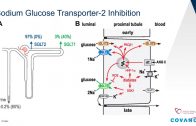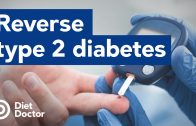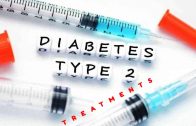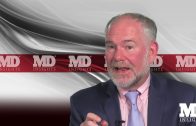Insulin Treatment Is Associated with Increased Mortality in Patients with COVID-19 and Type 2 Diabetes
Referred to by
Glucose or Insulin, Which Is the Culprit in Patients with COVID-19 and Diabetes?
Highlights
- •
-
689 patients with COVID-19 and T2D were retrospectively analyzed
- •
-
Insulin treatment associated with increased mortality risk with COVID-19
- •
-
Insulin was associated with higher mortality compared to other anti-diabetics
- •
-
Insulin treatment should be used with caution for patients with COVID-19 and T2D
Summary
COVID-19 caused by SARS-COV-2 infection can lead to multi-organ injuries and significant mortality in severe and critical patients, especially among those individuals with type 2 diabetes (T2D) as a comorbidity. While attenuated mortality was observed with aggressive glucose control, it was unclear whether therapeutic regimens including insulin treatment were beneficial for patients with COVID-19 and T2D. This retrospective study investigated 689 patients with COVID-19 and T2D from a cohort of 3,305 cases from Wuhan, China. Unexpectedly, we found that insulin treatment for patients with COVID-19 and T2D was associated with a significant increase in mortality (27.2% versus 3.5%; adjusted HR, 5.38 [2.75–10.54]). Further analysis showed that insulin treatment was associated with enhanced systemic inflammation and aggravated injuries of vital organs. Therefore, insulin treatment for patients with COVID-19 and T2D should be used with caution.
Graphical Abstract
Keywords
Introduction
Since December 2019, a newly recognized novel coronavirus disease (COVID-19) caused by severe acute respiratory syndrome coronavirus 2 (SARS-CoV-2) has spread rapidly around the world (Chen et al., 2020b). According to the report of the World Health Organization on October 3, 2020, the total number of confirmed patients with COVID-19 has risen sharply to 34,495,176, with 1,025,729 (3.0%) deaths (WHO., 2020).
There are more than 460 million diabetic individuals in the world (International Diabetes Federation, 2019). Several recent studies have indicated that individuals with diabetes mellitus are at a higher risk of SARS-CoV-2 infection and worse outcomes than the population without diabetes (Chen et al., 2020b; Guo et al., 2020a; Onder et al., 2020; Shi et al., 2020; Wang et al., 2020; Wu et al., 2020). In a recent retrospective study of patients with COVID-19 and type 2 diabetes mellitus (T2D), the mortality rate of patients with well-controlled blood glucose levels was much lower than those with poorly controlled blood glucose levels (Zhu et al., 2020). Thus, for patients with COVID-19 and T2D, glucose control in addition to standard therapy is important to lower the risk of death and adverse outcome. While earlier studies suggested using insulin to control glucose instead of oral anti-glycemic agents (Gupta et al., 2020; Longo et al., 2020), the clinical evidence demonstrating whether insulin is beneficial for patients with COVID-19 and T2D remains to be established.
This study aims to evaluate the efficacy of different anti-diabetic regimens based on the clinical outcomes of patients with COVID-19 and T2D and to provide clinical evidence to address the question of whether insulin treatment is beneficial or harmful for these patients.
Results
Demographics and Characteristics of the Study Cohort
A total of 689 consecutive patients with T2D who died or discharged from a cohort of 3,305 hospitalized patients with confirmed COVID-19 from Tongji Hospital, Wuhan, China, were included in this study (Figure 1). Among the patients with T2D, 364 patients (52.8%) were male and 325 (47.2%) were female (Table 1). The median age was 66 (IQR 55–73) years. A total of 346 of these patients received insulin alone or with other anti-diabetic medications for at least 3 days (Insulin group). The remaining 343 patients were treated with (or without) other antidiabetic drugs but without insulin (Non-insulin group). The median ages in the Insulin group and the Non-insulin group were 67 (IQR 58–75) and 65 (IQR 56–71) years (p = 0.019), respectively. Male patients were 187 (54.0%) in the Insulin group and 177 (51.6%) in the Non-insulin group (p = 0.521). There were no significant differences between the two subgroups in other underlying diseases, including hypertension (p = 0.087), coronary heart disease (p = 0.298), COPD (p = 0.727), and chronic kidney disease (p = 0.990). There were no significant differences in major symptoms at baseline between the two groups either (Table 1).

Figure 1. The Flowchart of Study Design
Table 1. Baseline Characteristics of Patients with COVID-19
| All Patients (n = 689) | Unmatched | PSM (1:1) | |||||||
|---|---|---|---|---|---|---|---|---|---|
| Insulin (n = 346) | Non-insulin (n = 343) | SMD | p | Insulin (n = 183) | Non-insulin (n = 183) | SMD | p | ||
| Age, years | 66 (57–73) | 67 (58–75) | 65 (56–71) | 0.188 | 0.019 | 64 (57–73) | 65 (57–74) | 0.022 | 0.756 |
| Age range, years: <60 (%) | 207 (30.0) | 94 (27.2) | 113 (32.9) | 0.126 | 0.098 | 58 (31.7) | 61 (33.3) | 0.035 | 0.738 |
| Age range, years: ≥60 (%) | 482 (70.0) | 252 (72.8) | 230 (67.1) | 0.126 | 0.098 | 125 (68.3) | 122 (66.7) | 0.035 | 0.738 |
| Gender, male (%) | 364 (52.8) | 187 (54.0) | 177 (51.6) | 0.049 | 0.521 | 98 (53.6) | 97 (53.0) | 0.011 | 0.917 |
| Original Comorbidities | |||||||||
| Hypertension (%) | 333 (48.3) | 156 (45.1) | 177 (51.6) | 0.131 | 0.087 | 84 (45.9) | 89 (48.6) | 0.055 | 0.601 |
| Coronary heart disease (%) | 95 (13.8) | 43 (12.4) | 52 (15.2) | 0.079 | 0.298 | 21 (11.5) | 25 (13.7) | 0.066 | 0.528 |
| COPD (%) | 9 (1.3) | 4 (1.2) | 5 (1.5) | 0.027 | 0.727 | 2 (1.1) | 2 (1.1) | <0.001 | >0.999 |
| Chronic kidney disease (%) | 8 (1.2) | 4 (1.2) | 4 (1.2) | 0.001 | 0.990 | 1 (0.5) | 2 (1.1) | 0.061 | 0.562 |
| Vital Signs | |||||||||
| Pulse, beats/min | 89 (80–102) | 90 (80–102) | 88 (78–102) | 0.107 | 0.141 | 88 (80–101) | 86 (78–101) | 0.080 | 0.349 |
| Respiratory rate, breaths/min | 20 (20–24) | 20 (20–25) | 20 (20–22) | 0.118 | 0.004 | 20 (20–24) | 20 (20–22) | 0.015 | 0.190 |
| Systolic blood pressure, mmHg | 134 (121–147) | 134 (120–149) | 134 (121–147) | 0.062 | 0.942 | 132 (120–149) | 134 (120–146) | 0.058 | 0.899 |
| Diastolic blood pressure, mmHg | 80 (72–89) | 80 (70–89) | 80 (74–88) | 0.009 | 0.484 | 80 (71–87) | 80 (72–87) | 0.110 | 0.504 |
| SpO2 on admission (%) | 97 (94–98) | 97 (94–98) | 97 (95–98) | 0.139 | 0.301 | 97 (94–98) | 97 (95–98) | 0.018 | 0.907 |
| Symptoms (%) | |||||||||
| Fever | 512 (74.3) | 254 (73.4) | 258 (75.2) | 0.041 | 0.587 | 132 (72.1) | 139 (76.0) | 0.087 | 0.404 |
| Cough | 453 (65.7) | 220 (63.6) | 233 (67.9) | 0.092 | 0.229 | 122 (66.7) | 123 (67.2) | 0.012 | 0.912 |
| Sputum production | 309 (44.8) | 161 (46.5) | 148 (43.1) | 0.068 | 0.372 | 83 (45.4) | 80 (43.7) | 0.033 | 0.752 |
| Chest tightness | 105 (15.2) | 50 (14.5) | 55 (16.0) | 0.044 | 0.563 | 29 (15.8) | 27 (14.8) | 0.030 | 0.772 |
| Nausea | 34 (4.9) | 19 (5.5) | 15 (4.4) | 0.052 | 0.498 | 11 (6.0) | 8 (4.4) | 0.074 | 0.48 |
| Diarrhea | 132 (33.9) | 67 (19.3) | 65 (19.0) | 0.011 | 0.890 | 33 (18.0) | 33 (18.0) | <0.001 | >0.999 |
| Muscle aches | 54 (7.8) | 21 (6.1) | 33 (9.6) | 0.132 | 0.083 | 15 (8.2) | 20 (10.9) | 0.093 | 0.374 |
| Pharynx discomfort | 32 (4.6) | 12 (3.5) | 20 (5.8) | 0.112 | 0.141 | 7 (3.8) | 7 (3.8) | <0.001 | >0.999 |
| Fatigue | 113 (16.4) | 55 (15.9) | 58 (16.9) | 0.027 | 0.719 | 32 (17.5) | 33 (18.0) | 0.014 | 0.891 |
Data were presented as medians and interquartile range (Q1–Q3). COPD, chronic obstructive pulmonary disease; SpO2, percutaneous oxygen saturation; SMD, standardized mean difference.
Laboratory Indices
The baseline laboratory test results of all patients and the propensity score-matched subpopulations between the two groups were presented in Table 2. In the overall population, the patients from the Insulin group had higher levels of white cell count, neutrophil count, aspartate aminotransferase, total bilirubin, lactate dehydrogenase, blood urea nitrogen, NT-ProBNP, cTnI, international normalized ratio, D-dimer, C-reactive protein, IL-6, IL-10, IL-8, IL-2R, and TNF-α compared with the Non-insulin group patients (p < 0.05). In contrast, the levels of lymphocyte count, platelet count, and albumin were lower in patients from the Insulin group than the Non-insulin group (p < 0.05). Furthermore, baseline levels of fasting blood glucose and HbA1c were also significantly different between the two groups at admission (p < 0.05). However, no differences in hemoglobin (p = 0.764), alanine aminotransferase (p = 0.132), creatinine (p = 0.675), APTT (p = 0.839), and IL-1β (p = 0.114) levels were observed between the two groups. After propensity score matching, the baseline characteristics for the matched subpopulations of patients were comparable between the Insulin group and the Non-insulin group (almost all p > 0.05).
Table 2. The Biochemical Values in Patients with COVID-19 and T2D on Admission
| Laboratory Parameters | All Patients (n = 689) | Unmatched | PSM (1:1) | ||||||
|---|---|---|---|---|---|---|---|---|---|
| Insulin (n = 346) | Non-insulin (n = 343) | SMD | p | Insulin (n = 183) | Non-insulin (n = 183) | SMD | p | ||
| Routine Blood Test | |||||||||
| White cell count, ×109/L | 6.5 (5.0–8.2) | 6.8 (5.1–9.3) | 6.1 (4.9–7.5) | 0.425 | <0.001 | 6.4 (4.9–8.5) | 6.1 (4.9–7.4) | 0.219 | 0.171 |
| Lymphocyte count, ×109/L | 1.0 (0.7–1.5) | 0.9 (0.6–1.3) | 1.2 (0.8–1.7) | 0.481 | <0.001 | 1.1 (0.7–1.6) | 1.1 (0.7–1.5) | 0.056 | 0.735 |
| Neutrophil count, ×109/L | 4.5 (3.2–6.3) | 5.2 (3.3–7.5) | 4.1 (3.1–5.4) | 0.528 | <0.001 | 4.7 (3.0–6.3) | 4.3 (3.2–5.6) | 0.219 | 0.235 |
| Platelet count, ×109/L | 220.0 (161.5–279.0) | 211.5 (150.0–275.5) | 225.0 (172.0–282.5) | 0.125 | 0.045 | 211.0 (159.0–272.0) | 225.0 (163.0–285.0) | 0.080 | 0.525 |
| Hemoglobin, g/L | 127.0 (115.0–139.0) | 126.5 (115.0–140.0) | 127.0 (115.5–138.0) | 0.037 | 0.764 | 127.0 (115.0–140.0) | 127.0 (115.0–139.0) | 0.115 | 0.542 |
| Blood Biochemistry | |||||||||
| Alanine aminotransferase, U/L | 22.0 (15.0–36.0) | 23.0 (16.0–38.0) | 22.0 (15.0–34.0) | 0.065 | 0.132 | 22.0 (15.0–39.0) | 21.0 (14.2–34.0) | 0.080 | 0.556 |
| Aspartate aminotransferase, U/L | 25.0 (18.0–38.0) | 27.0 (19.0–42.0) | 24.0 (17.0–35.0) | 0.105 | 0.002 | 26.0 (19.0–40.0) | 25.5 (17.0–37.8) | 0.077 | 0.378 |
| Albumin, g/L | 34.4 (31.1–38.3) | 33.2 (29.8–36.8) | 35.6 (32.8–39.2) | 0.503 | <0.001 | 34.8 (31.5–39.3) | 34.9 (32.3–38.1) | 0.038 | 0.92 |
| Lactate dehydrogenase, U/L | 275.0 (208.0–385.5) | 313.0 (229.0–440.0) | 242.0 (197.0–321.0) | 0.480 | <0.001 | 283.0 (208.8–392.2) | 262.0 (208.0–354.5) | 0.118 | 0.115 |
| Creatinine, μmol/L | 69.0 (56.0–88.0) | 68.0 (55.0–92.0) | 70.0 (58.0–85.0) | 0.103 | 0.675 | 67.5 (54.2–87.8) | 73.0 (56.0–87.0) | 0.012 | 0.567 |
| Blood urea nitrogen, mmol/L | 5.1 (3.9–7.1) | 5.8 (4.1–8.4) | 4.8 (3.8–6.0) | 0.410 | <0.001 | 5.2 (3.9–7.5) | 5.1 (4.0–6.4) | 0.164 | 0.208 |
| eGFR mL/min | 89.3 (72.9–99.3) | 87.4 (68.2–99.4) | 89.9 (76.7–99.1) | 0.124 | 0.059 | 90.2 (69.8–101.3) | 89.3 (73.8–97.9) | 0.019 | 0.635 |
| Total cholesterol, mmol/L | 3.8 (3.0–4.5) | 3.9 (3.0–4.5) | 3.8 (3.2–4.5) | 0.092 | 0.970 | 4.0 (3.1–4.9) | 3.6 (3.0–4.4) | 0.332 | 0.082 |
| Triglyceride, mmol/L | 1.4 (1.1–2.0) | 1.4 (1.0–1.9) | 1.4 (1.1–2.0) | 0.078 | 0.604 | 1.3 (1.0–1.7) | 1.5 (1.0–2.0) | 0.112 | 0.223 |
| HDL, mmol/L | 0.9 (0.7–1.1) | 0.9 (0.7–1.1) | 0.9 (0.7–1.1) | 0.050 | 0.465 | 1.0 (0.8–1.3) | 0.8 (0.7–1.0) | 0.362 | 0.033 |
| LDL, mmol/L | 2.3 (1.9–3.0) | 2.3 (1.7–3.0) | 2.4 (1.9–2.9) | 0.067 | 0.823 | 2.5 (1.9–3.2) | 2.2 (1.9–2.9) | 0.258 | 0.177 |
| NT-ProBNP, pg/mL | 186.0 (6.2–671.0) | 353.0 (97.5–1,251.0) | 130.0 (49.5–335.8) | 0.218 | <0.001 | 193.0 (53.0–623.5) | 155.0 (62.5–487.0) | 0.112 | 0.296 |
| cTnI, pg/mL | 6.4 (2.7–18.8) | 9.4 (3.3–29.6) | 4.9 (2.3–12.0) | 0.230 | <0.001 | 5.2 (2.3–20.2) | 6.0 (2.5–13.9) | 0.037 | 0.746 |
| Glucose, mmol/L | 7.8 (6.1–12.0) | 9.1 (6.6–14.6) | 7.1 (5.9–9.3) | 0.487 | <0.001 | 7.5 (6.0–11.2) | 7.7 (6.2–10.7) | 0.022 | 0.803 |
| HbA1c, % | 7.3 (6.4–9.1) | 8.4 (6.5–10.1) | 6.9 (6.3–8.0) | 0.578 | <0.001 | 7.5 (6.0–9.0) | 7.5 (6.5–8.8) | 0.025 | 0.509 |
| Coagulation Function | |||||||||
| International normalized ratio | 1.07 (1.01–1.15) | 1.10 (1.02–1.20) | 1.05 (1.00–1.11) | 0.297 | <0.001 | 1.1 (1.0–1.2) | 1.0 (1.0–1.1) | 0.061 | 0.009 |
| D-dimer, mg/L | 0.98 (0.44–2.38) | 1.33 (0.63–4.59) | 0.71 (0.32–1.58) | 0.474 | <0.001 | 1.0 (0.4–2.4) | 0.8 (0.4–1.9) | 0.116 | 0.163 |
| APTT, s | 38.5 (35.6–42.6) | 39.0 (35.5–42.5) | 38.5 (35.7–42.7) | 0.044 | 0.839 | 38.8 (35.6–42.0) | 39.3 (35.9–43.5) | 0.092 | 0.456 |
| Infection-Related Indices | |||||||||
| C-reactive protein, mg/L | 33.0 (3.9–84.8) | 47.3 (8.0–105.5) | 15.5 (2.8–61.7) | 0.480 | <0.001 | 30.6 (2.7–81.2) | 32.7 (5.3–77.6) | 0.044 | 0.529 |
| IL-6, pg/mL | 12.4 (3.2–39.9) | 18.1 (4.2–52.2) | 7.7 (3.1–31.0) | 0.183 | 0.005 | 7.3 (1.9–40.6) | 13.8 (4.0–44.9) | 0.113 | 0.137 |
| IL-10, pg/mL | 5.0 (5.0–7.5) | 5.0 (5.0–8.6) | 5.0 (5.0–6.5) | 0.135 | 0.028 | 5.0 (5.0–7.3) | 5.0 (5.0–9.1) | 0.113 | 0.171 |
| IL-8, pg/mL | 14.7 (8.0–27.7) | 16.8 (9.1–33.5) | 11.9 (7.4–22.5) | 0.151 | 0.006 | 13.4 (7.2–27.8) | 12.3 (8.1–27.0) | 0.143 | 0.978 |
| TNF-α, pg/mL | 9.1 (6.7–12.0) | 9.2 (7.0–13.3) | 8.9 (6.2–10.9) | 0.314 | 0.020 | 8.5 (6.5–11.9) | 9.2 (6.4–11.1) | 0.105 | 0.790 |
| IL-1β, pg/mL | 5.0 (5.0–5.0) | 5.0 (5.0–5.0) | 5.0 (5.0–5.0) | 0.176 | 0.114 | 5.0 (5.0–5.0) | 5.0 (5.0–5.0) | 0.191 | 0.153 |
| IL-2R, U/mL | 651.0 (386.5–1,031.5) | 704.0 (418.0–1,140.0) | 601.0 (352.5–915.0) | 0.304 | 0.015 | 551.5 (300.5–904.8) | 706.0 (422.0–999.8) | 0.182 | 0.065 |
Data were presented as medians and interquartile range (Q1–Q3). eGFR, estimated glomerular filtration rate; HDL, high-density lipoprotein; LDL, low-density lipoprotein; NT-proBNP, N-terminal pro-B-type natriuretic peptide; cTnI, cardiac troponin I; APTT, activated partial thromboplastin time; IL, interleukin; TNF-α, tumor necrosis factor-α.
Treatments
All patients received standard treatments for COVID-19 symptoms, according to the Clinical Guideline for COVID-19 Diagnosis and Treatment published by the National Health Commission of China (National Health Commission of the People’s Republic of China, 2020). However, as shown in Table 3, significant differences in certain treatments were noted between Insulin and Non-insulin groups, including the types of antidiabetic drugs (26.3% versus 38.5% of metformin, p < 0.05; 9.2% versus 22.4% of sulfonylureas, p < 0.05), antibacterial treatment (77.2% versus 65.6%, p < 0.05), glucocorticoids (52.6% versus 24.5%, p < 0.05), and oxygen therapy (86.4% versus 73.2%, p < 0.05). There were no differences in the application of glucosidase inhibitors (p = 0.271), dipeptidyl peptidase-4 (DPP-4) inhibitors (p = 0.536), insulin-sensitizing agents (p = 0.065), and antiviral treatment (p = 0.657) between Insulin and Non-insulin groups.
Table 3. Comparison of Treatment of Patients between the Insulin and Non-insulin Groups
| All Patients (n = 689) | Unmatched | PSM (1:1) | |||||||
|---|---|---|---|---|---|---|---|---|---|
| Insulin (n = 346) | Non-insulin (n = 343) | SMD | p | Insulin (n = 183) | Non-insulin (n = 183) | SMD | p | ||
| Antidiabetic treatment, n (%): metformin | 223 (32.4) | 91 (26.3) | 132 (38.5) | 0.263 | <0.001 | 51 (27.9) | 78 (42.6) | 0.313 | 0.003 |
| Antidiabetic treatment, n (%): α-glucosidase inhibitors | 295 (42.8) | 141 (40.8) | 154 (44.9) | 0.084 | 0.271 | 79 (43.2) | 79 (43.2) | <0.001 | >0.999 |
| Antidiabetic treatment, n (%): sulfonylureas | 109 (15.8) | 32 (9.2) | 77 (22.4) | 0.368 | <0.001 | 14 (7.7) | 40 (21.9) | 0.409 | <0.001 |
| Antidiabetic treatment, n (%): dipeptidyl peptidase-4 inhibitors | 50 (7.3) | 23 (6.6) | 27 (7.9) | 0.047 | 0.536 | 16 (8.7) | 15 (8.2) | 0.020 | 0.851 |
| Antidiabetic treatment, n (%): insulin-sensitizing agents | 15 (2.2) | 4 (1.2) | 11 (3.2) | 0.141 | 0.065 | 2 (1.1) | 4 (2.2) | 0.086 | 0.410 |
| Antiviral treatment, n (%) | 287 (41.7) | 147 (42.5) | 140 (40.8) | 0.034 | 0.657 | 84 (45.9) | 86 (47.0) | 0.022 | 0.834 |
| Antibacterial treatment, n (%) | 492 (71.4) | 267 (77.2) | 225 (65.6) | 0.258 | <0.001 | 124 (67.8) | 129 (70.5) | 0.059 | 0.572 |
| Glucocorticoids, n (%) | 266 (38.6) | 182 (52.6) | 84 (24.5) | 0.603 | <0.001 | 81 (44.3) | 55 (30.1) | 0.297 | 0.005 |
| Oxygen therapy, no. (%) | 550 (79.8) | 299 (86.4) | 251 (73.2) | 0.334 | <0.001 | 155 (84.7) | 142 (77.6) | 0.182 | 0.082 |
Insulin and Blood Glucose
In the Insulin group, the median duration of insulin treatment was 12 (5–22) days, and 28.6% of these patients with T2D (99/346) received insulin treatment during the entire period of hospitalization. The dosages before three meals were 10 (6–16), 7 (6–10), and 8.5 (6–12) U, respectively. 38.4% of these patients (133/346) received insulin immediately after admission. The median starting time of insulin treatment was at day 2 (1–5) post-admission. In addition, among patients treated with insulin during hospitalization, 22.5% (78/346) of them were documented with insulin treatment prior to COVID-19.
In the Insulin group, 29.7% of patients with a record of blood glucose monitoring (81/273) showed episodes of hypoglycemia (blood glucose < 3.9 mmol/L or observed hypoglycemia symptoms) during insulin treatment. The median frequency of hypoglycemia during insulin treatment was 2 (1–3) and median level of glucose when patients showed hypoglycemia was 3.5 (3.1–3.7) mmol/L. In contrast, only 1.4% of the Non-insulin group patients (3/209) showed hypoglycemia episodes and none of them died (p < 0.001). In the insulin-treated patients who died from COVID-19, 40.6% of them (26/64) experienced hypoglycemia episodes during hospitalization, compared with the insulin-treated patients who survived, where 26.3% (55/209) patients had experienced hypoglycemia (p = 0.028).
In the Insulin group, fasting blood glucose levels before and after 3 days of insulin treatment were 9.0 (6.4–13.2) and 6.9 (5.8–9.5) mmol/L, respectively (p < 0.001). In the Non-insulin group, fasting blood glucose level was 7.8 (6.5–9.8) mmol/L at admission versus 6.9 (6.1–8.4) mmol/L at day 3 after admission (p = 0.008). In the Insulin group, postprandial blood glucose levels were 12.9 (8.3–17.1) mmol/L before insulin treatment versus 9.1 (6.8–12.4) mmol/L at day 3 after insulin treatment (p < 0.001). In the Non-insulin group, postprandial blood glucose level was 11.9 (9.8–15.5) and 9.7 (7.9–11.4) mmol/L at days 0 and 3 after admission, respectively (p < 0.001).
Clinical Outcomes
Among the entire cohort of 689 patients with COVID-19 and T2D, a total of 106 patients died (mortality 15.4%), including 94 out of 346 in the Insulin group (27.2%) and 12 out of 343 in the Non-insulin group (3.5%, chi-square test, p < 0.001). The median hospital stay durations were 22 days for the Insulin group and 20 days for the Non-insulin group (p = 0.431) (Table 4). However, for discharged patients, median hospitalization time was significantly longer for the insulin-treated patients than the non-insulin-treated patients (26 versus 20 days, p < 0.001).
Table 4. Comparison of Clinical Outcome of Patients between the Insulin and Non-insulin Groups
| Clinical Outcome | All Patients (n = 689) | Unmatched | PSM (1:1) | ||||
|---|---|---|---|---|---|---|---|
| Insulin (n = 346) | Non-insulin (n = 343) | p | Insulin (n = 183) | Non-insulin (n = 183) | p | ||
| Hospitalization time (days)a | 20 (13–32) | 22 (12–33) | 20 (13–30) | 0.431 | 22 (13–35) | 21 (13–34) | 0.708 |
| In-hospital mortality, n (%) | 106 (15.4) | 94 (27.2) | 12 (3.5) | <0.001 | 31 (16.9) | 9 (4.9) | <0.001 |
Data were presented as medians and interquartile range (Q1–Q3).
- a
-
Hospitalization time contained discharged and dead patients
The Kaplan-Meier survival analysis showed a significantly poorer survival in patients with T2D treated with insulin compared with patients with T2D without insulin treatment (log-rank, p < 0.001) (Figure 2A). According to Schoenfeld’s global test, the insulin treatment groups did not violate the proportional hazard assumption in all Cox regression models. Thus, the proportional Cox regression method was used to analyze the influence of insulin treatment on death as the primary outcome. The results from Cox regression showed the risk of all-cause mortality was higher in the insulin-treated group (crude HR, 7.70; 95% CI, 4.22–14.05; p < 0.001). After further adjustments for age; gender; histories of hypertension, coronary heart disease, COPD, and chronic kidney disease; the baseline levels of SpO2, respiratory rate, pulse, glucose, lymphocyte, albumin, NT-proBNP, HbA1c, CRP, and IL-6; and poorly controlled glucose (glucose > 10 mmol/L on admission), patients treated with insulin still had a significantly lower survival rate than those without insulin treatment (adjusted HR, 5.38; 95% CI, 2.75–10.54; p < 0.001). In the propensity score-matched subcohorts, the use of insulin was associated with a 3.21-fold higher risk for all-cause mortality after adjustment for systolic blood pressure, white cell count, blood urea nitrogen, NT-ProBNP, D-dimer, and IL-6. In addition, in the propensity-matched cohorts, the deleterious effect of insulin manifested from day 7 after admission based on survival curve. This result suggests that long-term use of insulin (>7 days) might be harmful to patients with COVID-19 and T2D (Figure 2B). Furthermore, we compared the differences between groups with or without episodes of hypoglycemia in order to evaluate the effect of hypoglycemia on the observed higher mortality associated with insulin treatment. Among the patients with T2D without episodes of hypoglycemia during hospitalization, insulin treatment was still associated with higher mortality (25.66% [68/265] versus 3.53% [12/340], p < 0.001), with an adjusted HR at 6.85 (95% CI 1.22–38.45; p = 0.029). Furthermore, we performed a multivariable Cox regression analysis in all patients with T2D who had reported episodes of hypoglycemia. The result showed that insulin treatment was associated with a higher mortality compared to non-insulin treatment (adjusted HR, 5.19; 95% CI, 2.69–10.01; p < 0.001). All these results suggest that insulin treatment could increase the risk of patients with T2D independently from the onset of hypoglycemia. Indeed, in the propensity score-matched population, the use of insulin was still significantly associated with a worse clinical outcome (in-hospital mortality, 16.9% in the Insulin group versus 4.9% in the Non-insulin group; HR, 3.21; 95% CI, 1.37–7.54; p = 0.007) (Figure 2B).

Figure 2. Kaplan-Meier Survival Curve for Patients with COVID-19 and T2D with and without Insulin Treatment
(A) Kaplan-Meier survival curve for all 689 patients with COVID-19 and T2D.
(B) Kaplan-Meier survival curve for patients with COVID-19 and T2D in the propensity score-matched subpopulation.
(C) Kaplan-Meier survival curve for critically ill patients with COVID-19 with T2D. Log-rank; p < 0.05 indicated statistical significance.
In order to evaluate the impact of insulin treatment on patients with COVID-19 with different disease severity, we analyzed a subcohort of 201 patients with COVID-19 and T2D who were critically ill based on the criteria set by the Chinese clinical guideline for diagnosis and treatment of COVID-19 (National Health Commission of the People’s Republic of China, 2020). Among them, 145 received insulin treatment after becoming critically ill and 56 received no insulin treatment. In this subcohort of critically ill patients with COVID-19 and T2D, mortality was also markedly higher in patients treated with insulin than patients receiving no insulin treatment (57.24% [83/145] versus 21.43% [12/56], p < 0.001) (Figure 2C) (crude HR, 2.77; 95% CI, 1.51–5.09; p < 0.001; adjusted HR, 2.45; 95% CI, 1.25–4.81; p = 0.009). This conclusion remained valid even when the observation started from the date of admission (Figure S1). Therefore, insulin treatment was associated with significantly higher mortality in patients with COVID-19 and T2D, independent of COVID-19 severity. Furthermore, the associations of insulin treatment with the incidences of secondary outcomes were also explored. Except for acute liver injury, the incidences of all other secondary outcomes, including acute cardiac injury, acute kidney injury, invasive mechanical ventilation, transferring to intensive care unit, and episodes of hypoglycemia, were all higher in the patients treated with insulin compared with those without insulin treatment. In propensity score-matched subcohorts, the statistical differences were still significant for acute kidney injury, invasive mechanical ventilation, admission to intensive care unit, and hypoglycemia, but not for acute liver injury and acute cardiac injury (Table 5).
Table 5. Hazard Ratios for Secondary Outcomes between Patients in the Insulin and Non-insulin Groups
| Secondary Outcome | All Patients before PSM | Patients after PSM (1:1)a | ||
|---|---|---|---|---|
| Adjusted HRb (95% CI) | p | Adjusted HRc (95% CI) | p | |
| Acute cardiac injury | 1.79 (1.23–2.61) | 0.002 | 1.33 (0.83–2.12) | 0.232 |
| Acute liver injury | 1.16 (0.70–1.92) | 0.573 | 1.10 (0.58–2.09) | 0.760 |
| Acute kidney injury | 4.78 (1.81–12.65) | 0.002 | 4.96 (1.41–17.37) | 0.012 |
| Invasive mechanical ventilation | 6.73 (3.39–13.37) | <0.001 | 4.09 (1.77–9.43) | <0.001 |
| Intensive care unit (ICU) | 11.47 (3.40–38.66) | <0.001 | 5.71 (1.67–19.54) | 0.006 |
| Hypoglycemia | 23.13 (7.15–74.82) | <0.001 | 10.62 (3.20–35.23) | <0.001 |
- a
-
Age; sex; symptoms on admission (fever, cough, fatigue, and dyspnea); SpO2; vital signs (pulse, respiratory rate, and blood pressure); the histories of hypertension, coronary heart disease, chronic obstructive pulmonary disease (COPD), and chronic kidney disease; and the baseline levels of hs-CRP, NT-proBNP, hs-cTnI, albumin, lymphocyte, d-dimer, and eGFR were used for propensity score-matching analysis
- b
-
Adjusted variables included age; gender; histories of hypertension, coronary heart disease, COPD, and chronic kidney disease; the baseline levels of SpO2, respiratory rate, pulse, glucose, lymphocyte, albumin, NT-proBNP, HbA1c, CRP, and IL-6; and poorly controlled glucose (glucose > 10 mmol/L on admission)
- c
-
Adjusted variables included systolic blood pressure, white cell count, blood urea nitrogen, NT-ProBNP, D-dimer, and IL-6
Insulin Treatment and Mortality in Subgroups of Patients with COVID-19 and T2D Based on History, Laboratory Indices, and Glucose Control
Due to significant differences in the baseline characteristics between the Insulin and Non-insulin groups from the study cohort, further survival analysis was performed after stratifying patients into different subgroups based on glucose (more or less than 10.0 mmol/L), HbA1c (more or less than 6.5%), lymphocyte count (more or less than 1.1 × 109/L), albumin (more or less than 35 g/L), NT-proBNP (more or less than 285 pg/mL), C-reactive protein (more or less than 10 pg/mL), IL-6 (more or less than 7 pg/mL), and other laboratory indices. In almost all subgroups (except the IL-6 less than 7 pg/mL subgroup), the fatalities in patients treated with insulin were consistently higher than in patients receiving no insulin treatments (Table S1). Cox regression model showed similar results, that insulin treatment had a higher hazard ratio in most of the subgroups (Table S2).
In patients with well-controlled glucose (≤10 mmol/L), the mortalities for the Insulin group versus the Non-insulin group were 31.55% (59/187) versus 2.69% (7/260) (p < 0.001), with a crude HR 11.52 (95% CI, 5.26–25.22; p < 0.001) and an adjusted HR 8.50 (95% CI, 3.04–23.75; p < 0.001) (Figure 3A). In patients with poorly controlled glucose (>10 mmol/L), the mortalities for the Insulin group versus the Non-insulin group were 22.00% (33/150) versus 5.71% (4/70) (p = 0.005), with a crude HR 3.93 (95% CI, 1.40–11.08, p = 0.010) and an adjusted HR 13.16 (95% CI, 1.49–116.44; p = 0.010) (Figure 3B). In patients with well-controlled HbA1c (<6.5%), the mortalities for the Insulin group versus the Non-insulin group were 35.71% (10/28) versus 2.86% (1/35) (p < 0.001), with a crude HR 18.50 (95% CI, 2.36–145.07; p = 0.006) and an adjusted HR 20.20 (95% CI, 2.52–159.19; p = 0.005) (Figure 3C), and again, in patients with poorly controlled HbA1c (≥6.5%), mortalities were 18.39% (16/87) versus 5.80% (4/69) (p = 0.038),with a crude HR 3.00 (95% CI, 1.01–9.00), p = 0.049 and an adjusted HR 3.26 (95% CI, 1.09–9.81; p = 0.035) (Figure 3D). In patients with normal lymphocyte count at admission (≥1.1 × 109 /L), the mortalities for the Insulin group versus the Non-insulin group were 11.57% (14/121) versus 0.56% (1/178), with an adjusted HR 18.06 (95% CI, 2.14–152.34; p = 0.008) (Figure 3E), while in patients with low lymphocyte count at admission (<1.1 × 109/L), the mortalities were 36.84% (77/209) versus 5.52% (8/145), with an adjusted HR 6.84 (95% CI, 3.12–14.99; p < 0.001) (Figure 3F). In patients with normal plasma albumin level on admission (≥35 g/L), the mortalities for the Insulin group versus the Non-insulin group were 11.61% (13/112) versus 1.60% (3/187), with an adjusted HR 4.38 (95% CI, 1.16–16.48; p = 0.029) (Figure 3G), and in patients with low albumin level (<35 g/L), the mortalities were 35.32% (77/218) versus 5.44% (8/147), with an adjusted HR 6.42 (95% CI, 2.94–14.03; p < 0.001) (Figure 3H). In patients with high NT-proBNP (>285 pg/mL) at admission, the mortalities for the Insulin group versus the Non-insulin group were 43.33% (65/150) versus 10.00% (8/80) (p < 0.001), with a crude HR 4.77 (95% CI, 2.29–9.95, p < 0.001) and an adjusted HR 4.37 (95% CI, 1.97–9.68; p < 0.001) (Figure 3I), while in patients with normal NT-proBNP at admission (≤285 pg/mL), the mortalities were 16.81% (19/113) versus 1.60% (3/188) (p < 0.001), with a crude HR 9.87 (95% CI, 2.92–33.42; p < 0.001) and an adjusted HR 13.59 (95% CI, 3.30–55.11; p < 0.001) (Figure 3J). In patients with high C-reactive protein (>10 mg/L) and high IL-6 (>7 pg/mL), the Kaplan-Meier survival curves also showed a lower survival rate in patients treated with insulin compared to the non-insulin treated (Figures 3K and 3L).

Figure 3. Kaplan-Meier Survival Curve for Patients with COVID-19 and T2D with and without Insulin Treatment in Different Subgroups
(A) Kaplan-Meier survival curve for patients with COVID-19 and T2D with well-controlled glucose (≤10 mmol/L).
(B) Kaplan-Meier survival curve for patients with COVID-19 and T2D with poorly controlled glucose (>10 mmol/L).
(C) Kaplan-Meier survival curve for patients with COVID-19 and T2D with well-controlled HbA1c (<6.5%).
(D) Kaplan-Meier survival curve for patients with COVID-19 and T2D with poorly controlled HbA1c (≥6.5%).
(E) Kaplan-Meier survival curve for patients with COVID-19 and T2D with normal lymphocyte count on admission (≥1.1 × 109/L).
(F) Kaplan-Meier survival curve for patients with COVID-19 and T2D with low lymphocyte count on admission (<1.1 × 109/L).
(G) Kaplan-Meier survival curve for patients with COVID-19 and T2D with normal albumin on admission (≥35 g/L).
(H) Kaplan-Meier survival curve for patients with COVID-19 and T2D with low albumin on admission (<35 g/L).
(I) Kaplan-Meier survival curve for patients with COVID-19 and T2D with high NT-proBNP on admission (>285 pg/mL).
(J) Kaplan-Meier survival curve for patients with COVID-19 and T2D with low NT-proBNP on admission (≤285 pg/mL).
(K) Kaplan-Meier survival curve for patients with COVID-19 and T2D with high C-reactive protein on admission (>10 mg/L).
(L) Kaplan-Meier survival curve for patients with COVID-19 and T2D with high IL-6 (>7 pg/mL) on admission.
(M) Kaplan-Meier survival curve for patients with COVID-19 and newly diagnosed T2D.
(N) Kaplan-Meier survival curve for patients with COVID-19 and T2D less than 5 years.
(O) Kaplan-Meier survival curve for patients with COVID-19 and T2D more than 5 years. Log-rank; p < 0.05 indicated statistical significance.
We further compared patients with different duration of T2D history by stratifying the cohort into newly diagnosed and less than or longer than 5 years of diagnosis. For patients with COVID-19 and newly diagnosed T2D, mortalities for the Insulin treatment group versus Non-insulin group were 35.42% (51/144) versus 2.35% (2/85) (p < 0.05), and adjusted HR was 10.22 (95% CI, 2.45–42.67; p < 0.001) (Figure 3M). For patients with COVID-19 and diagnosis of T2D less than 5 years, the adjusted HR was 23.42 (95% CI, 3.00–182.73; p = 0.003) (Figure 3N), and for patients with COVID-19 and diagnosis of T2D more than 5 years, adjusted HR was 13.00 (95% CI, 1.63–103.85; p = 0.015) (Figure 3O).
In short, patients stratified in different subgroups based on different baseline laboratory indices and T2D history showed similar outcome of decreased survival and higher hazard ratio associated with insulin treatment versus non-insulin treatment (Tables S1 and S2).
Insulin Treatment Compared with Other Anti-diabetic Treatment in Patients with COVID-19
We further analyzed and compared the clinical outcome of insulin versus other antidiabetic treatments in patients with COVID-19 and T2D. First, we compared the effects of different anti-diabetic treatments on mortality in all patients with T2D. Approximately 86.5% (596/689) of this diabetic cohort received anti-diabetic drug treatments, which included metformin, α-glucosidase inhibitors, sulfonylureas, DPP-4 inhibitors, and insulin, and the remaining 13.5% (93/689) of patients with T2D were not treated with any anti-diabetic treatments. Among those who received anti-diabetic treatment, patients with insulin alone or insulin combined with any other anti-diabetic treatment had a significantly higher mortality than those without insulin treatment, as shown in Figure S2 (all p < 0.05). In addition, we compared mortalities in patients treated with insulin alone versus insulin in combination with another anti-diabetic treatment. Although the patients treated with insulin in combination with other anti-diabetic treatment had higher baseline levels of glucose and HbA1c compared with the patients treated with insulin alone, these patients still had a lower in-hospital mortality than the insulin-alone group (Figures S3 and S4 and Tables S3–S6).
Finally, we performed direct comparisons on mortalities in patients receiving insulin treatment versus patients receiving other anti-diabetic treatments either in the entire T2D cohort or in propensity score-matched subcohorts (Figures 4 and S3). The baseline characteristics were shown in Tables S7–S10. In the entire T2D cohort, we observed a consistently higher mortality in insulin-treated patients than patients receiving other anti-diabetic treatments, including metformin, α-glucosidase inhibitors, sulfonylureas, and DPP-4 inhibitors. More importantly, in the subcohort of patients after propensity score matching with comparable baseline characteristics, the results showed insulin treatment was still significantly associated with a higher mortality in comparison with all other anti-diabetic treatments (Figure 4). These results implicate a specific adverse effect of insulin treatment among current anti-diabetic therapies for patients with COVID-19 and T2D.

Figure 4. Kaplan-Meier Survival Curve for Patients with COVID-19 and T2D with Insulin and Other Anti-diabetic Drugs after PSM
(A) Kaplan-Meier survival analysis of patients treated with insulin or metformin.
(B) Kaplan-Meier survival analysis of patients treated with insulin or α-glucosidase inhibitors.
(C) Kaplan-Meier survival analysis of patients treated with insulin or sulfonylureas.
(D) Kaplan-Meier survival analysis of patients treated with insulin or DPP-4 inhibitors.
PSM, propensity score matching. Log-rank; p < 0.05 indicated statistical significance.
Dynamic Profile of Vital Signs and Laboratory Parameters during Hospitalization in Patients with or without Insulin Treatment
To evaluate the temporal pattern of clinical manifestation following the administration of insulin, the dynamic profiles of vital signs (pulse, respiratory rate, systolic blood pressure, and diastolic blood pressure) and indicators of systemic inflammation and organ injuries (plasma levels of albumin, lymphocyte, NT-proBNP, hs-cTnI, hs-CRP, IL-6, and D-dimer) were analyzed and compared from day 2 to day 20 after admission at 4-day intervals. In the entire study cohort, patients in the Insulin group had higher rates of heartbeat and respiration than patients in the Non-insulin group at almost all time points during hospitalization. For instance, at the 12th day, median pulse rate was 80 beats/min (70–90 beats/min) for the Insulin group and 78 beats/min (69–85 beats/min) for the Non-insulin group (p = 0.009), while respiratory rate at the 12th day was 19 times/min (18–20 breaths/min) for the Insulin group and 20 times/min (18–21 breaths/min) for the Non-insulin group (p < 0.001). However, there were no significant differences in systolic blood pressure between the two groups, although at some points (8th and 20th day) the level of diastolic blood pressure for the Insulin group was lower than the Non-insulin group (p < 0.05). Additionally, most patients in the Insulin group showed abnormal levels of lymphocyte counts (indicator of immune system reaction), NT-proBNP (indicator of heart failure), albumin (indicator of liver dysfunction), hs-cTnI (indicator of myocardial injury), hs-CRP (indicator of inflammation), IL-6 (indicator of cytokine storm), and D-dimer (indicator of coagulation) throughout their hospitalization. In contrast, these indices were within normal ranges for most patients in the Non-insulin group. The dynamic changes of these parameters showed significant differences between the Insulin and Non-insulin groups (p < 0.05) as depicted in Figure 5. Interestingly, the NT-proBNP and hs-cTnI levels in the insulin-treated patients were elevated gradually during hospitalization and reached the highest levels around the 12th day after the beginning of insulin treatment (p < 0.05), indicating a potential association between insulin treatment and myocardial injury (Figures 5E and 5F). A similar temporal pattern of gradual induction was also observed for D-dimer levels in the Insulin group following the inception of insulin treatment during hospitalization (Figure 5I). Furthermore, in the propensity score-matched subcohorts, the baseline characteristics were comparable (Tables 1 and 2) and there were no differences in all vital signs or indicators of systemic inflammation and organ injuries at the onset of observation. However, following insulin treatment, the levels of NT-ProBNP, hs-cTnI, IL-6, and D-dimer were elevated gradually in the Insulin subgroup, while these indicators were reduced in the Non-insulin subgroup (p < 0.05) (Figure S5). These results support the hypothesis that insulin treatment may exacerbate inflammatory induction and aggravate injuries to vital organs during COVID-19 pathogenesis, and ultimately lead to increased mortality.

Figure 5. Dynamic Profile of Vital Signs and Laboratory Parameters in All 689 Patients with COVID-19 and T2D with and without Insulin Treatment
(A) Dynamic change of pulse rates.
(B) Dynamic change of diastolic blood pressure.
(C) Dynamic change of albumin; the dashed line in black shows the upper normal limit of albumin (35 g/L).
(D) Dynamic change of lymphocyte count; the dashed line in black shows the lower normal limit of lymphocyte count (1.1 × 109/L).
(E) Dynamic change of NT-proBNP; the dashed line in black shows the lower limit of the adjudication of heart failure (125 pg/mL).
(F) Dynamic change of hs-cTnI; the dashed line in black shows the lower limit of the adjudication of myocardial injury for female (15.6 pg/mL).
(G) Dynamic change of hs-CRP; the dashed line in black shows the lower limit of the adjudication of inflammation (10 pg/mL).
(H) Dynamic change of IL-6; the dashed line in black shows the upper normal limit (7 pg/mL).
(I) Dynamic change of D-dimer; the dashed line in black shows the upper normal limit (0.5 mg/mL). ∗p < 0.05.
Discussion
In this retrospective study, we evaluated the association of insulin treatment with the adverse clinical outcome in patients with COVID-19 and T2D. Our results showed that insulin treatment was associated with significantly increased mortality, and a similar association was observed in different subgroups stratified according to baseline characteristics, diabetic treatment options, and history of diabetic status. Furthermore, among the critically ill patients with COVID-19 and T2D, insulin treatment was also associated with increased mortality. Further, we found that insulin treatment was associated with enhanced inflammation and injury of vital organs during the progression of COVID-19 symptoms in patients with T2D. All of these results suggest that insulin treatment is uniquely associated with worse adverse outcome in patients with COVID-19 and T2D.
T2D is significantly correlated with the severity of coronavirus infection, including SARS-COV-2 (Bornstein et al., 2020). According to recent studies, about 10%–30% of hospitalized patients with COVID-19 have pre-existing T2D (Guo et al., 2020a; Richardson et al., 2020). Patients with T2D infected with the new coronavirus have increased risk of severe complications (including respiratory failure and acute cardiac injury) and deaths than non-diabetic patients (Epidemiology Working Group for NCIP Epidemic Response and Chinese Center for Disease Control and Prevention, 2020; Shang et al., 2020; Wang et al., 2020). While this observation has been well reported, it remains to be determined how to treat patients with COVID-19 and T2D in order to reduce complications and mortalities.
Several studies have demonstrated poor glycemic control in patients with T2D is associated with a significantly elevated risk of severe complications and death when infected by SARS-CoV-1, MERS-CoV, and H1N1 (Badawi and Ryoo, 2016; Yang et al., 2006). Previous studies suggest that the expression of glycosylated ACE2 protein in lung tissue was higher in diabetic mice than non-diabetic controls (Roca-Ho et al., 2017). Thus, glycemic control may decrease the binding capacity of SARS-CoV-2 by reducing the level of ACE2 in the lung, leading to ameliorated severity of the disease. In addition, SARS-CoV-2 infection may also worsen the hyperglycemia state, which can in turn lead to more severe pneumonia. Compared with patients with COVID-19 with well-controlled blood glucose, patients with poorly controlled blood glucose had a higher risk of severity and mortality (Bode et al., 2020; Zhu et al., 2020). Clearly, controlling blood glucose is very important for the prognosis of patients with COVID-19 (Smith et al., 2020).
Unfortunately, however, there is no consensus currently on which anti-diabetic drugs best benefit the patients with COVID-19 and T2D. Some earlier reports suggested avoiding metformin and sodium glucose co-transporter-2 inhibitors for increased risk of lactic acidosis (Bornstein et al., 2020; Gupta et al., 2020). Yet some observational and retrospective studies showed metformin treatment actually decreased the mortality in patients with COVID-19 and T2D (Bramante et al., 2020; Luo et al., 2020). One recent study also reported that patients with COVID-19 and T2D had a lower mortality when they were treated with DPP-4 inhibitors (11.2% versus 4.4%, p = 0.008) (Zhu et al., 2020).
Insulin was always a preferred modality in an emergency situation, especially for those who suffered respiratory distress. Therefore, insulin therapy has been recommended by many experts for patients with T2D infected with SARS-CoV-2 (Bornstein et al., 2020; Gupta et al., 2020; Kosinski et al., 2020). However, hypoglycemia is a very common side effect of insulin, especially when patients were under intensive care (Gerstein et al., 2008; The Diabetes Control and Complications Trial Research Group, 1997). An earlier study showed patients with T2D who received intensive glycemic control had significantly higher risk of hypoglycemia (McCoy et al., 2016). Another study showed that glucose control by insulin increased the mortality in a cohort of 6,104 medical ICU patients (Finfer et al., 2009). Another clinical observation found that insulin treatment at admission for patients with sepsis was associated with a higher 30-day mortality rate compared with those patients treated with oral antidiabetic drugs (Haltmeier et al., 2016). A pre-clinical study showed that lung inflammation was increased after insulin treatment in diabetic rats with sepsis (Filgueiras et al., 2014). Finally, insulin was shown to increase the pro-inflammatory cytokine levels produced by activated macrophages in vitro during the lipopolysaccharide-induced sepsis (Brundage et al., 2008). These studies indicate that glucose control by insulin treatment increases the mortality in critical patients, likely through promoting inflammation, consistent with our own observation in this cohort of patients with COVID-19 and T2D.
In this study, the clinical outcomes of patients with COVID-19 and T2D were analyzed and compared between those treated with insulin versus those treated without insulin. Opposite from prevailing expectations, our data showed insulin treatment was harmful to patients with COVID-19 and T2D rather than beneficial. The mortality of patients with COVID-19 and T2D treated with insulin was significantly higher than those without insulin treatment. After adjusting for factors that may also contribute to the disease severity, this conclusion remained valid. In the subcohort established by propensity score matching, this conclusion was still valid. Additional survival analysis in the subgroups stratified based on different baseline characteristics or different severity also revealed a similar pattern of association. For patients with different history of T2D, insulin treatment was associated with a decreased survival rate across all subgroups. Interestingly, there was a higher proportion of hypoglycemia in diabetic patients treated with insulin than those who received no insulin treatment. In addition, among the patients treated with insulin, the proportion of hypoglycemia was also higher in the non-survivors than the survivors. These data suggest that hypoglycemia may be one of the key drivers underlying higher mortality associated with insulin treatment. Though the mechanism remains unclear, the outcome of our study offers an important cautionary note for clinicians to evaluate the benefits and potential adverse effects when they implement insulin therapy for patients with COVID-19 and T2D.
In summary, according to this retrospective study, insulin treatment in patients with COVID-19 and T2D was associated with a significant increase in mortality. It is important for clinicians to evaluate the condition of patients with COVID-19 and T2D when insulin treatment is being considered. In addition, close monitoring of blood glucose, vital signs, and organ injuries should be implemented when patients with COVID-19 and T2D are treated with insulin.
Limitations of Study
There are several limitations in our study. As a retrospective study, patients between the two groups were not strictly matched and some clinical data were missing. Between the Insulin and Non-insulin groups, there were significant differences in several baseline characteristics and laboratory indices at admission (e.g., SpO2, NT-proBNP, and albumin), which may contribute to the different severity and outcome observed between the two groups. Although we adjusted these differences using Cox regression and propensity score matching and performed additional analysis in several subgroups, unintended bias may still exist. In addition, the blood glucose monitoring in these patients with T2D was not uniformly conducted throughout the hospitalization due to the urgent states of COVID-19. Additional bias may also arise due to the differences of islet function between Insulin and Non-insulin treatment groups. Finally, this study was a retrospective observation, which could not establish a causal effect relationship between insulin treatment and high mortality. More prospective and randomized clinical studies will be needed.
STAR★Methods
Key Resources Table
| REAGENT or RESOURCE | SOURCE | IDENTIFIER |
|---|---|---|
| Software and Algorithms | ||
| R-3.6.4 | R Foundation for Statistical Computing | https://www.r-project.org/ |
| MatchIt-3.0.2 | Daniel Ho | https://cran.r-project.org/web/packages/MatchIt/ |
| dplyr-1.0.2 | Hadley Wickham | https://cran.r-project.org/web/packages/dplyr/ |
| openxlsx-4.1.5 | Philipp Schauberger | https://cran.r-project.org/web/packages/openxlsx/ |
| mice-3.4.0 | Stef van Buuren | https://cran.r-project.org/web/packages/mice/ |
| survival-3.2-3 | Terry M Therneau | https://cran.r-project.org/web/packages/survival/ |
| tableone-0.12.0 | Kazuki Yoshida | https://cran.r-project.org/web/packages/tableone/ |
| Graphpad Prism 6 | Graphpad | https://www.graphpad.com/ |
| Adobe Photoshop CS6 | Adobe company | https://www.adobe.com/cn/ |
Resource Availability
Lead Contact
Further information and requests for resources and reagents should be directed to the Lead Contact, Dao Wen Wang (dwwang@tjh.tjmu.edu.cn).
Materials Availability
The study did not generate any new reagents or materials.
Data and Code Availability
The data and codes related to the findings of this study will be available from the corresponding author after publication upon reasonable request. The research team will provide an email address for communication once the data are approved to be shared with others. The proposal with detailed aims, statistical plan, and other information/materials may be required to guarantee the rationality of requirement and the security of the data. The patient-level data, but without names and other identifiers, will be shared after review and approval of the submitted proposal and any related requested materials.
Method Details
Study Design
This investigation is a retrospective study involving patients with COVID-19 and T2D in Tongji Hospital, Wuhan, China. These patients were diagnosed according to the WHO interim guideline and the Clinical Guideline for COVID-19 Diagnosis and Treatment published by the National Health Commission of China and those who admitted to Tongji hospital between February 1, 2020, and March 26, 2020, were included in this study. The management of patients with COVID-19 and T2D was performed according the guidelines recommended by the Chinese Diabetes Society (Diabetes Branch of Chinese Medical Association, 2020). This study was approved by the institutional review board of Tongji Hospital (IRBID: TJ-IRB20200229). The written informed consent was waived by the Ethics Committee because of the retrospective and anonymous nature of the data.
Patients’ Information
Patients were admitted under the following inclusion criteria: (1) age ≥ 18 years old; (2) Laboratory confirmation of COVID-19 by laboratory tests; (3) confirmed by chest computed tomography (CT) and SARS-CoV-2 pathogenic test and (4) newly diagnosed T2D (fasting plasma glucose ≥ 7.0 mmol/L or 2-h plasma glucose ≥ 11.1 mmol/L) or previous history of T2D. Patients were excluded under the following exclusion criteria: (1) hospital stay or medication course < 3 days; (2) age ≥ 85 years; (3) Missing all or almost all data on laboratory characteristics and clinical characteristics and (4) Type 1 diabetes. The inclusion as critically ill patients had to meet one of the following criteria: 1) patients had respiratory failure and needed mechanical ventilation; 2) patients had septic shock during hospitalization and 3) patients with other organ failures that required monitoring and treatment by intensive care unit. In this study, we finally included 689 patients with COVID-19 and T2D with hospitalization during the epidemic period from February 1 of 2020 to April 7 of 2020. Patients (Insulin group and Non-insulin group) were categorized based on whether they were treated with insulin for at least 3 days during hospitalization or not.
Data Collection and Endpoints Definitions
We reviewed the clinical records and laboratory data for all the patients. Data was collected and checked independently by two study investigators. We extracted demographic data, medical history, exposure history, symptoms and signs, laboratory findings, chest CT scans, in-hospital therapies, and clinical deposits through the electronic medical records. Laboratory test results included blood routine, liver and renal function, random blood glucose, glycated hemoglobin, coagulation function, myocardial marker and Infection-related indices. The primary outcome was defined as all-cause death during hospitalization. The secondary outcomes were the occurrence of acute cardiac injury, acute liver injury, acute kidney injury, invasive mechanical ventilation, intensive care unit (ICU) admission and hypoglycemia. Acute cardiac injury was defined with serum level of cardiac troponin I (cTnI) above the upper limit of normal (ULN) (Huang et al., 2020a). Acute liver injury was defined with serum ALT or alkaline phosphatase above 3 folds of ULN (Marrone et al., 2017). Acute kidney injury was defined with an elevation in serum creatinine level more than 26.5 μmol/L within 48 h (Khwaja, 2012). Hypoglycemia was defined with lower than 3.9 mmol/L of blood glucose (Chen et al., 2020a).
Cox Regression Analysis
The hazard ratios and 95% confidence interval was calculated by Cox proportional regression models. The proportional assumptions were examined by Schoenfeld’s global test. In studying whether the treatment is associated with the clinical outcome, some baseline characteristics reported to be associated with the severity of COVID-19 (Guo et al., 2020b; Henry et al., 2020; Huang et al., 2020b; Zhu et al., 2020) and imbalanced between treatment groups were treated as potential confounding variables. We adjusted for these baseline characteristics in the multivariable Cox regression models. These potential confounding variables included age, gender, histories of hypertension, coronary heart disease, COPD and chronic kidney disease, indicators of disease severity and organ injuries (the baseline levels of SpO2, respiratory rate, pulse, glucose, lymphocyte, albumin, NT-proBNP, HbA1c, CRP, and IL-6), and poor-controlled glucose (glucose > 10 mmol/L on admission).
Propensity Score-Matched Analysis
To account for the retrospective and nonrandom design, we applied 1:1 propensity score matching analysis to balance the potential baseline confounders for the association of insulin treatment with the clinical outcome (MatchIt version 3.0.2 of R packages version 3.1.4, Vienna, Austria). We matched the treated and untreated group based on propensity score calculated by logistical regression model. The incorporated variables in the logistical model include age, sex, symptoms on admission (fever, cough, fatigue, and dyspnea), SpO2, vital signs (pulse, respiratory rate, and blood pressure), the histories of hypertension, coronary heart disease, chronic obstructive pulmonary disease (COPD), and chronic kidney disease, the indicators of organ injuries (baseline levels of hs-CRP, NT-proBNP, hs-cTnI, albumin, lymphocyte, d-dimer, eGFR). The value of caliper was set equal to 0.05, and < 10% for absolute standardized differences in means indicated a small imbalance (Columbia Public Health, 2020). The distributions of subjects exposed and unexposed to treatment before and after propensity score matching were presented in Figure S6. For those imbalanced variables between groups, we used Cox regression model to further adjust for them to obtain hazard ratios for the clinical outcome.
Missing Data Imputation
Given that multivariable Cox regression analysis and propensity score analysis require a complete set of variables, and the missing values in the analysis would increase I/II type false rate, the missing laboratory variables were efficiently imputed by using mice version 3.4.0 of R Package (version 3.1.4, Vienna, Austria) with multiple imputation method (Lee and Carlin, 2010). The missing patterns of variables used in the Cox multivariable regressions and propensity score matching were analyzed. We found that at baseline, the HbA1c and IL-6 have the most missing values (Figure S7). The goodness of fit was then evaluated by density plot. In Figure S8, the blue curves are the observed variables and red ones are imputed variables. The similar distributions of observed variables and imputed variables verify the excellent performance of missing data imputation.
Quantification and Statistical Analysis
Continuous values were expressed as medians and interquartile range (IQR) and categorical variables as counts and percentages. The comparisons between groups were performed with Wilcoxon rank-sum tests for nonparametric continuous variables. Categorical variables were compared using Chi-square test or Fisher’s exact test. Survival curves was described by Kaplan-Meier method and compared with the log-rank test. The association of the exposure and clinical outcome was assessed by Cox regression analysis in all patients with T2D and Cox regression analysis after propensity score matching.
Acknowledgments
We thank all our colleagues from the Department of Internal Medicine, Tongji Hospital, as well as all the medical staff fighting against COVID-19, for their tremendous efforts. We thank Prof. Yibin Wang of the Molecular Biology Institute, Cardiovascular Research Laboratories, Departments of Anesthesiology, Physiology, and Medicine, David Geffen School of Medicine, University of California, Los Angeles, for his help in the preparation of the manuscript. This work was supported in part by projects from the Nature Science Foundation of China (nos. 81630010, 81790624, and C-0052), Ministry of Science and Technology of China (no. 2020YFC0844500), and Major Projects of Technological Innovation of Hubei Province (no. 2017ACA170). No funding bodies had any role in study design, data collection and analysis, decision to publish, or preparation of the manuscript.
Author Contributions
B.Y. and C.L. contributed equally, designed the study, collected and analyzed data, performed the statistical analysis, and wrote the manuscript. Y.S. reviewed and checked clinical data. D.W.W. designed the project, edited the manuscript, and supervised the study. All authors have approved the final version of this paper.
Declaration of Interests
The authors have declared that no competing interests exist.
Supplemental Information
Document S1. Figures S1–S8 and Tables S1–S10.
Document S2. Article plus Supplemental Information.
References
- Badawi and Ryoo, 2016
-
A. Badawi, S.G. Ryoo
Prevalence of diabetes in the 2009 influenza A (H1N1) and the Middle East respiratory syndrome coronavirus: a systematic review and meta-analysisJ. Public Health Res., 5 (2016), p. 733 - Bode et al., 2020
-
B. Bode, V. Garrett, J. Messler, R. McFarland, J. Crowe, R. Booth, D.C. Klonoff
Glycemic characteristics and clinical outcomes of COVID-19 patients hospitalized in the United StatesJ. Diabetes Sci. Technol., 14 (2020), pp. 813-821 - Bornstein et al., 2020
-
S.R. Bornstein, F. Rubino, K. Khunti, G. Mingrone, D. Hopkins, A.L. Birkenfeld, B. Boehm, S. Amiel, R.I. Holt, J.S. Skyler, et al.
Practical recommendations for the management of diabetes in patients with COVID-19Lancet Diabetes Endocrinol., 8 (2020), pp. 546-550 - Bramante et al., 2020
-
C. Bramante, N. Ingraham, T. Murray, S. Marmor, S. Hoversten, J. Gronski, C. McNeil, R. Feng, G. Guzman, N. Abdelwahab, et al.
Observational study of metformin and risk of mortality in patients hospitalized with Covid-19medRxiv (2020), 10.1101/2020.06.19.20135095 - Brundage et al., 2008
-
S.I. Brundage, N.N. Kirilcuk, J.C. Lam, D.A. Spain, N.A. Zautke
Insulin increases the release of proinflammatory mediatorsJ. Trauma, 65 (2008), pp. 367-372 - Chen et al., 2020a
-
M. Chen, H. Li, Y. Shen, B. Liu, R. Yan, X. Sun, L. Ye, K.O. Lee, J. Ma, X. Su
Flash glucose monitoring improves glucose control in people with type 2 diabetes mellitus receiving anti-diabetic drug medicationExp. Clin. Endocrinol. Diabetes, 2020 (2020), p. 28 - Chen et al., 2020b
-
N. Chen, M. Zhou, X. Dong, J. Qu, F. Gong, Y. Han, Y. Qiu, J. Wang, Y. Liu, Y. Wei, et al.
Epidemiological and clinical characteristics of 99 cases of 2019 novel coronavirus pneumonia in Wuhan, China: a descriptive studyLancet, 395 (2020), pp. 507-513 - Columbia Public Health, 2020
-
Columbia Public Health
Propensity score analysis - Diabetes Branch of Chinese Medical Association, 2020
-
Diabetes Branch of Chinese Medical Association
Management suggestions for patients with diabetes and novel coronavirus pneumoniaChin J Diabetes Mellitus, 12 (2020), pp. 73-75 - Epidemiology Working Group for NCIP Epidemic ResponseChinese Center for Disease Control and Prevention, 2020
-
Epidemiology Working Group for NCIP Epidemic Response, Chinese Center for Disease Control and Prevention
[The epidemiological characteristics of an outbreak of 2019 novel coronavirus diseases (COVID-19) in China]Zhonghua Liu Xing Bing Xue Za Zhi, 41 (2020), pp. 145-151 - Filgueiras et al., 2014
-
L.R. Filgueiras, V.L. Capelozzi, J.O. Martins, S. Jancar
Sepsis-induced lung inflammation is modulated by insulinBMC Pulm. Med., 14 (2014), p. 177 - Finfer et al., 2009
-
S. Finfer, D.R. Chittock, S.Y. Su, D. Blair, D. Foster, V. Dhingra, R. Bellomo, D. Cook, P. Dodek, W.R. Henderson, et al., NICE-SUGAR Study Investigators
Intensive versus conventional glucose control in critically ill patientsN. Engl. J. Med., 360 (2009), pp. 1283-1297 - Gerstein et al., 2008
-
H.C. Gerstein, M.E. Miller, R.P. Byington, D.C. Goff Jr., J.T. Bigger, J.B. Buse, W.C. Cushman, S. Genuth, F. Ismail-Beigi, R.H. Grimm Jr., et al., Action to Control Cardiovascular Risk in Diabetes Study Group
Effects of intensive glucose lowering in type 2 diabetesN. Engl. J. Med., 358 (2008), pp. 2545-2559 - Guo et al., 2020a
-
L. Guo, Z. Shi, Y. Zhang, C. Wang, N.C. Do Vale Moreira, H. Zuo, A. Hussain
Comorbid diabetes and the risk of disease severity or death among 8807 COVID-19 patients in China: a meta-analysisDiabetes Res. Clin. Pract., 166 (2020), p. 108346 - Guo et al., 2020b
-
T. Guo, Y. Fan, M. Chen, X. Wu, L. Zhang, T. He, H. Wang, J. Wan, X. Wang, Z. Lu
Cardiovascular implications of fatal outcomes of patients with coronavirus disease 2019 (COVID-19)JAMA Cardiol., 5 (2020), pp. 811-818 - Gupta et al., 2020
-
R. Gupta, A. Ghosh, A.K. Singh, A. Misra
Clinical considerations for patients with diabetes in times of COVID-19 epidemicDiabetes Metab. Syndr., 14 (2020), pp. 211-212 - Haltmeier et al., 2016
-
T. Haltmeier, E. Benjamin, E. Beale, K. Inaba, D. Demetriades
Insulin-treated patients with diabetes mellitus undergoing emergency abdominal surgery have worse outcomes than patients treated with oral agentsWorld J. Surg., 40 (2016), pp. 1575-1582 - Henry et al., 2020
-
B.M. Henry, M.H.S. de Oliveira, S. Benoit, M. Plebani, G. Lippi
Hematologic, biochemical and immune biomarker abnormalities associated with severe illness and mortality in coronavirus disease 2019 (COVID-19): a meta-analysisClin. Chem. Lab. Med., 58 (2020), pp. 1021-1028 - Huang et al., 2020a
-
C. Huang, Y. Wang, X. Li, L. Ren, J. Zhao, Y. Hu, L. Zhang, G. Fan, J. Xu, X. Gu, et al.
Clinical features of patients infected with 2019 novel coronavirus in Wuhan, ChinaLancet, 395 (2020), pp. 497-506 - Huang et al., 2020b
-
W. Huang, C. Li, Z. Wang, H. Wang, N. Zhou, J. Jiang, L. Ni, X.A. Zhang, D.W. Wang
Decreased serum albumin level indicates poor prognosis of COVID-19 patients: hepatic injury analysis from 2,623 hospitalized casesSci. China Life Sci., 63 (2020), pp. 1678-1687 - International Diabetes Federation, 2019
-
International Diabetes Federation
IDF Diabetes Atlas(Ninth Edition), International Diabetes Federation (2019) - Khwaja, 2012
-
A. Khwaja
KDIGO clinical practice guidelines for acute kidney injuryNephron Clin. Pract., 120 (2012), pp. c179-c184 - Kosinski et al., 2020
-
C. Kosinski, A. Zanchi, A. Wojtusciszyn
[Diabetes and COVID-19 infection]Rev. Med. Suisse, 16 (2020), pp. 939-943 - Lee and Carlin, 2010
-
K.J. Lee, J.B. Carlin
Multiple imputation for missing data: fully conditional specification versus multivariate normal imputationAm. J. Epidemiol., 171 (2010), pp. 624-632 - Longo et al., 2020
-
M. Longo, P. Caruso, M.I. Maiorino, G. Bellastella, D. Giugliano, K. Esposito
Treating type 2 diabetes in COVID-19 patients: the potential benefits of injective therapiesCardiovasc. Diabetol., 19 (2020), p. 115 - Luo et al., 2020
-
P. Luo, L. Qiu, Y. Liu, X.L. Liu, J.L. Zheng, H.Y. Xue, W.H. Liu, D. Liu, J. Li
Metformin treatment was associated with decreased mortality in COVID-19 patients with diabetes in a retrospective analysisAm. J. Trop. Med. Hyg., 103 (2020), pp. 69-72 - Marrone et al., 2017
-
G. Marrone, F.G. Vaccaro, M. Biolato, L. Miele, A. Liguori, C. Araneo, F.R. Ponziani, N. Mores, A. Gasbarrini, A. Grieco
Drug-induced liver injury 2017: the diagnosis is not easy but always to keep in mindEur. Rev. Med. Pharmacol. Sci., 21 (Suppl) (2017), pp. 122-134 - McCoy et al., 2016
-
R.G. McCoy, K.J. Lipska, X. Yao, J.S. Ross, V.M. Montori, N.D. Shah
Intensive treatment and severe hypoglycemia among adults with type 2 diabetesJAMA Intern. Med., 176 (2016), pp. 969-978 - National Health Commission of the People’s Republic of China, 2020
-
National Health Commission of the People’s Republic of China
Diagnosis and treatment of COVID-19 (trial version 7) - Onder et al., 2020
-
G. Onder, G. Rezza, S. Brusaferro
Case-fatality rate and characteristics of patients dying in relation to COVID-19 in ItalyJAMA, 323 (2020), pp. 1775-1776 - Richardson et al., 2020
-
S. Richardson, J.S. Hirsch, M. Narasimhan, J.M. Crawford, T. McGinn, K.W. Davidson, D.P. Barnaby, L.B. Becker, J.D. Chelico, S.L. Cohen, et al., the Northwell COVID-19 Research Consortium
Presenting characteristics, comorbidities, and outcomes among 5700 patients hospitalized with COVID-19 in the New York City areaJAMA, 323 (2020), pp. 2052-2059 - Roca-Ho et al., 2017
-
H. Roca-Ho, M. Riera, V. Palau, J. Pascual, M.J. Soler
Characterization of ACE and ACE2 expression within different organs of the NOD mouseInt. J. Mol. Sci., 18 (2017), p. 563 - Shang et al., 2020
-
J. Shang, Q. Wang, H. Zhang, X. Wang, J. Wan, Y. Yan, Y. Gao, J. Cheng, Z. Li, J. Lin
The relationship between diabetes mellitus and COVID-19 prognosis: a retrospective cohort study in Wuhan, ChinaAm. J. Med. (2020), 10.1016/j.amjmed.2020.05.033Published July 10, 2020 - Shi et al., 2020
-
H. Shi, X. Han, N. Jiang, Y. Cao, O. Alwalid, J. Gu, Y. Fan, C. Zheng
Radiological findings from 81 patients with COVID-19 pneumonia in Wuhan, China: a descriptive studyLancet Infect. Dis., 20 (2020), pp. 425-434 - Smith et al., 2020
-
S.M. Smith, A. Boppana, J.A. Traupman, E. Unson, D.A. Maddock, K. Chao, D.P. Dobesh, A. Brufsky, R.I. Connor
Impaired glucose metabolism in patients with diabetes, prediabetes, and obesity is associated with severe COVID-19J. Med. Virol. (2020), 10.1002/jmv.26227Published online June 26, 2020 - The Diabetes Control and Complications Trial Research Group, 1997
-
The Diabetes Control and Complications Trial Research Group
Hypoglycemia in the diabetes control and complications trialDiabetes, 46 (1997), pp. 271-286 - Wang et al., 2020
-
D. Wang, B. Hu, C. Hu, F. Zhu, X. Liu, J. Zhang, B. Wang, H. Xiang, Z. Cheng, Y. Xiong, et al.
Clinical characteristics of 138 hospitalized patients with 2019 novel coronavirus-infected pneumonia in Wuhan, ChinaJAMA, 323 (2020), pp. 1061-1069 - WHO, 2020
-
WHO
WHO Coronavirus Disease (COVID-19) Dashboardhttps://covid19.who.int/ (2020) - Wu et al., 2020
-
C. Wu, X. Chen, Y. Cai, J. Xia, X. Zhou, S. Xu, H. Huang, L. Zhang, X. Zhou, C. Du, et al.
Risk factors associated with acute respiratory distress syndrome and death in patients with coronavirus disease 2019 pneumonia in Wuhan, ChinaJAMA Intern. Med., 180 (2020), pp. 934-943 - Yang et al., 2006
-
J.K. Yang, Y. Feng, M.Y. Yuan, S.Y. Yuan, H.J. Fu, B.Y. Wu, G.Z. Sun, G.R. Yang, X.L. Zhang, L. Wang, et al.
Plasma glucose levels and diabetes are independent predictors for mortality and morbidity in patients with SARSDiabet. Med., 23 (2006), pp. 623-628 - Zhu et al., 2020
-
L. Zhu, Z.G. She, X. Cheng, J.J. Qin, X.J. Zhang, J. Cai, F. Lei, H. Wang, J. Xie, W. Wang, et al.
Association of blood glucose control and outcomes in patients with COVID-19 and pre-existing type 2 diabetesCell Metab., 31 (2020), pp. 1068-1077.e3
Cited by (49)
-
Responsive and self-healing structural color supramolecular hydrogel patch for diabetic wound treatment
2022, Bioactive Materials -
Glucose dysregulation and its association with COVID-19 mortality and hospital length of stay
2022, Diabetes and Metabolic Syndrome: Clinical Research and Reviews -
Metformin to decrease COVID-19 severity and mortality: Molecular mechanisms and therapeutic potential
2021, Biomedicine and Pharmacotherapy -
Association between hyperglycemia treatment and mortality in patients with diabetes and COVID-19 in a Peruvian hospital: A retrospective cohort study
2021, Journal of Clinical and Translational Endocrinology -
Hyperglycemia in acute COVID-19 is characterized by insulin resistance and adipose tissue infectivity by SARS-CoV-2
2021, Cell Metabolism -
COVID-19 and metabolic disease: mechanisms and clinical management
2021, The Lancet Diabetes and Endocrinology














